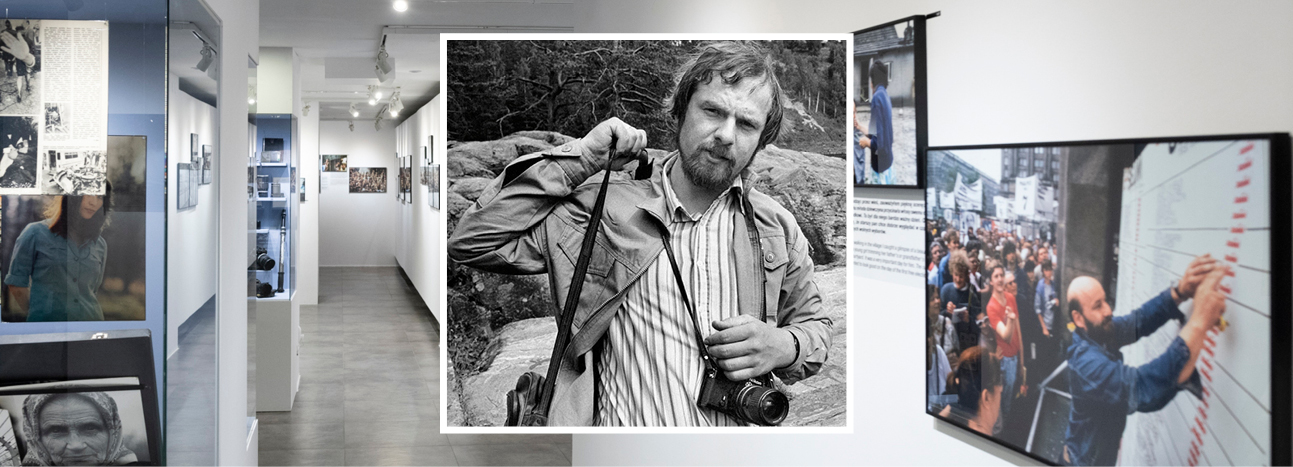A stunning exhibition displaying the works of photographer Chris Niedenthal has now opened at DSH…

A stunning exhibition displaying the works of photographer Chris Niedenthal has now opened at DSH…

His December 1981 photograph of an armored personnel carrier standing in front of Warsaw’s, now non-existent, “Moscow” cinema with a banner advertising Francis Ford Coppola’s 1979 film “Apocalypse Now” became an icon of martial law in Poland. The rest of his oeuvre is no less significant, after all, Chris Niedenthal always did his best to be in the frontline.
Along with British journalist, Michael Dobbs, Niedenthal was the first foreign photojournalist to be let in to the Gdansk Shipyard during the 1980 strikes against the Communist Regime. His work, documenting the situation in Poland in the last quarter of the 20th century, earned him international recognition.
To celebrate 50 years of his remarkable career, Dom Spotkan z Historią invites the public to a retrospective exhibition of his work. NIEDENTHAL will run until the 7th of April 2023 and is free for all.
“The biggest challenge was choosing over 200 stills from an archive of hundreds of thousands of photographs. It’s not easy to create an exhibition of work by a photographer, whose pictures are frequently displayed and featured in publications.
“We were tempted to elicit surprise, do something that has not been done before. However, our idea to showcase an overview of Niedenthal’s work, covering the past 50 years, is already something that nobody has yet done,” explain Anna Brzezinska and Katarzyna Puchalska, curators of the exhibit.
Chris Niedenthal was born in 1950 to Polish immigrants living in London. He received his first camera, a Kodak Starmite, aged 11 – a gift for excellent exam results. While at university, at the London College of Printing, the already experienced photographer had a clear vision: he wanted to document, not create, the new reality.
“I was interested in print and photojournalism,” reminisces Niedenthal.“ I couldn’t get it out of my head. At university we had promotional photography, portraiture, but I always did everything in a photojournalistic style.”
At 23-years-old Niedenthal arrived in Poland. He planned to stay for a few months but ended up relocating. Early work included working as a freelance press photographer and between 1974 and 1978 Niedenthal’s work appeared in German magazine titles such as the weekly Stern and monthly Geo, as well as the Swedish daily Expressen.
Though he was often eager to be in the thick of things, documenting historic occasions or important figures, his primary interest, as both curators point out, was the daily life of unidentified individuals.
“He trekked through Poland with a camera and photographed what he saw – events, which to us appear typical, yet, in which he noticed something extraordinary. (…) His identity, as a foreign correspondent, allowed him to take photos that many were not permitted to take.”
The exhibit at DSH features such lesser-known works, alongside Niedenthal’s iconic images. The photography displays are complimented by personal memorabilia, original issues of Time magazine, as well as various cameras used by the photographer – all of which serve to enrich the viewing experience and give a better insight into the language of photography.